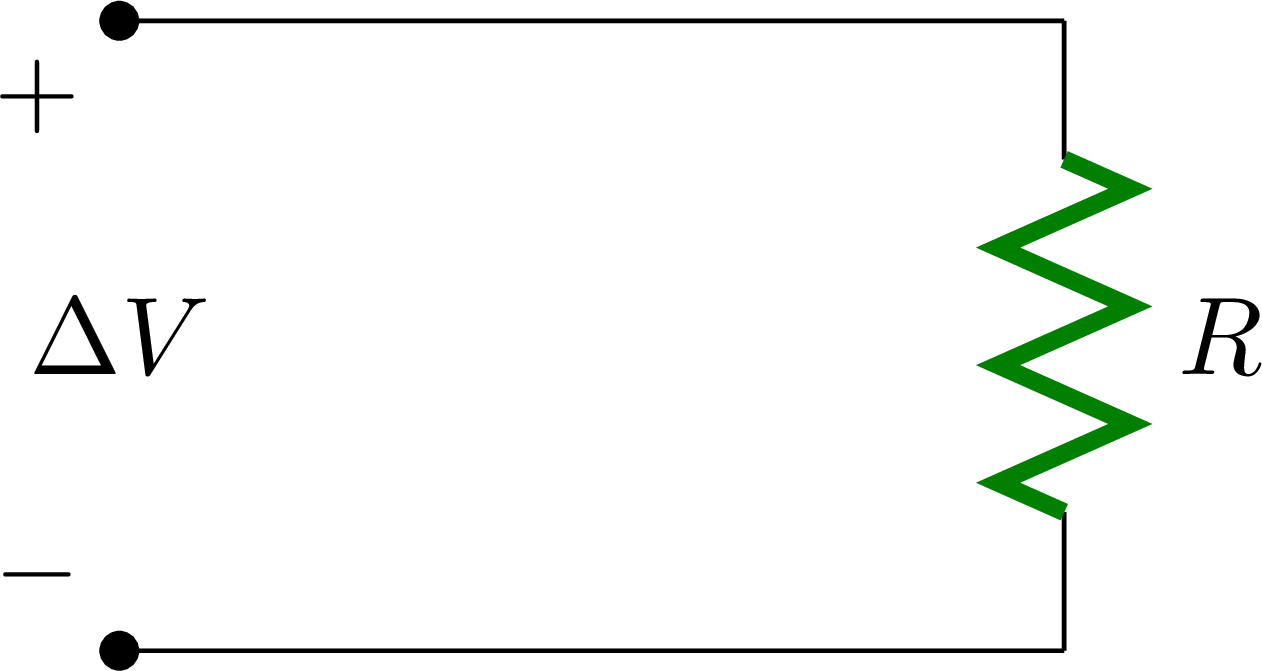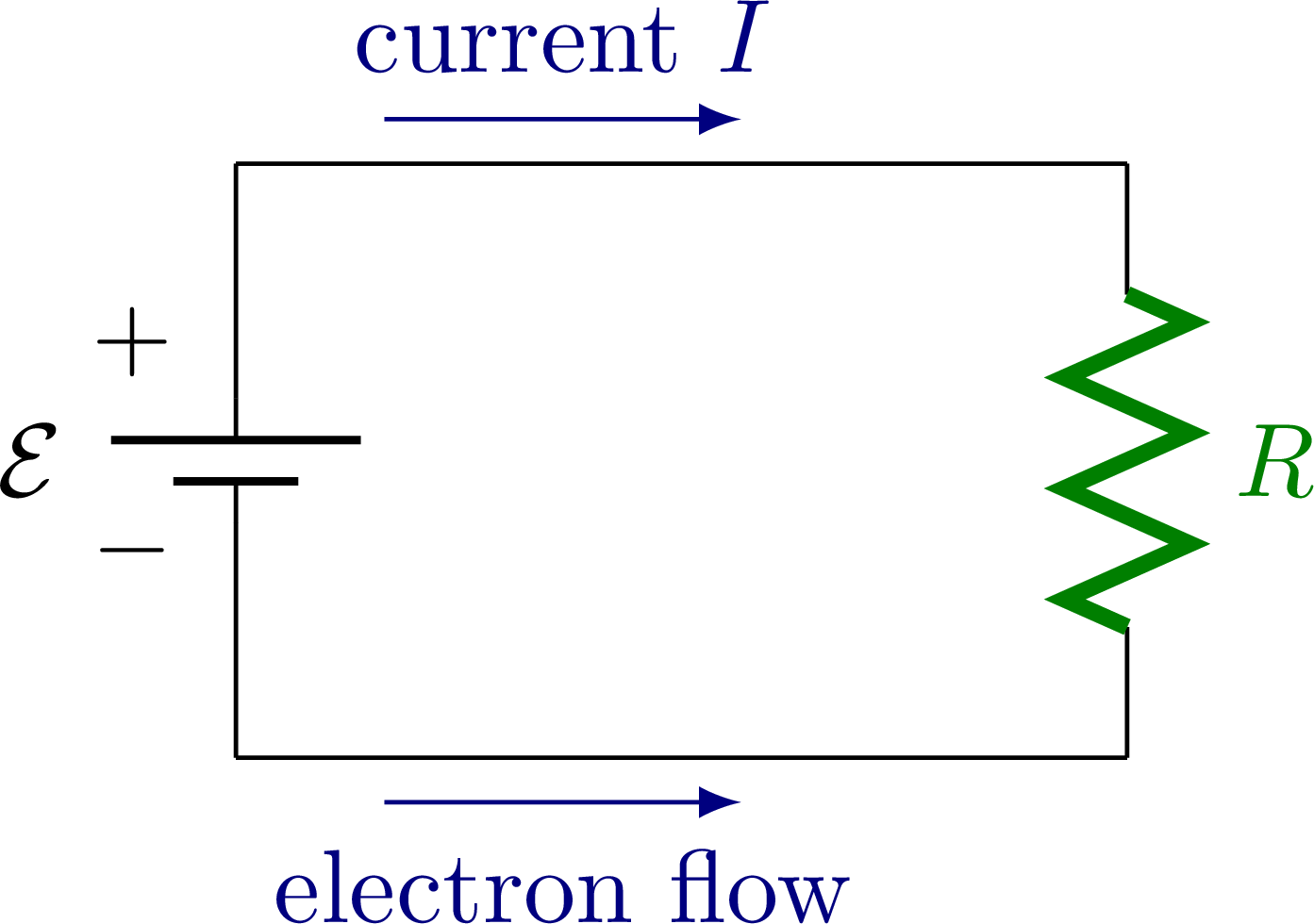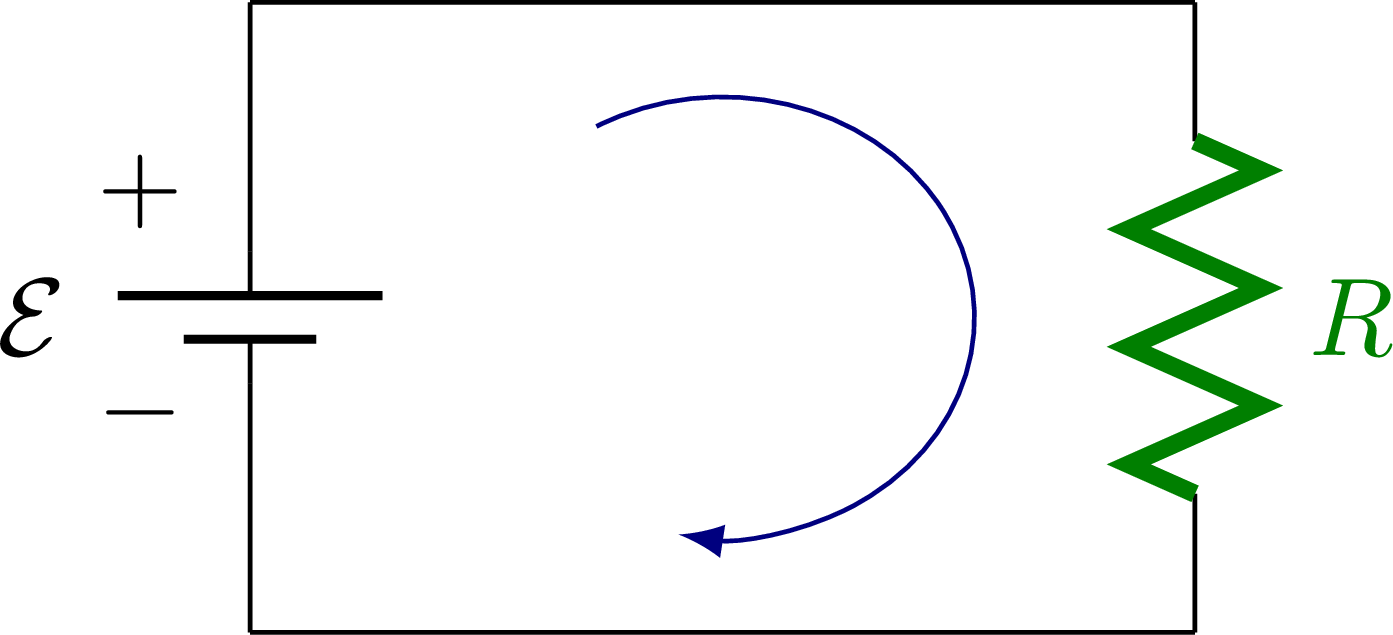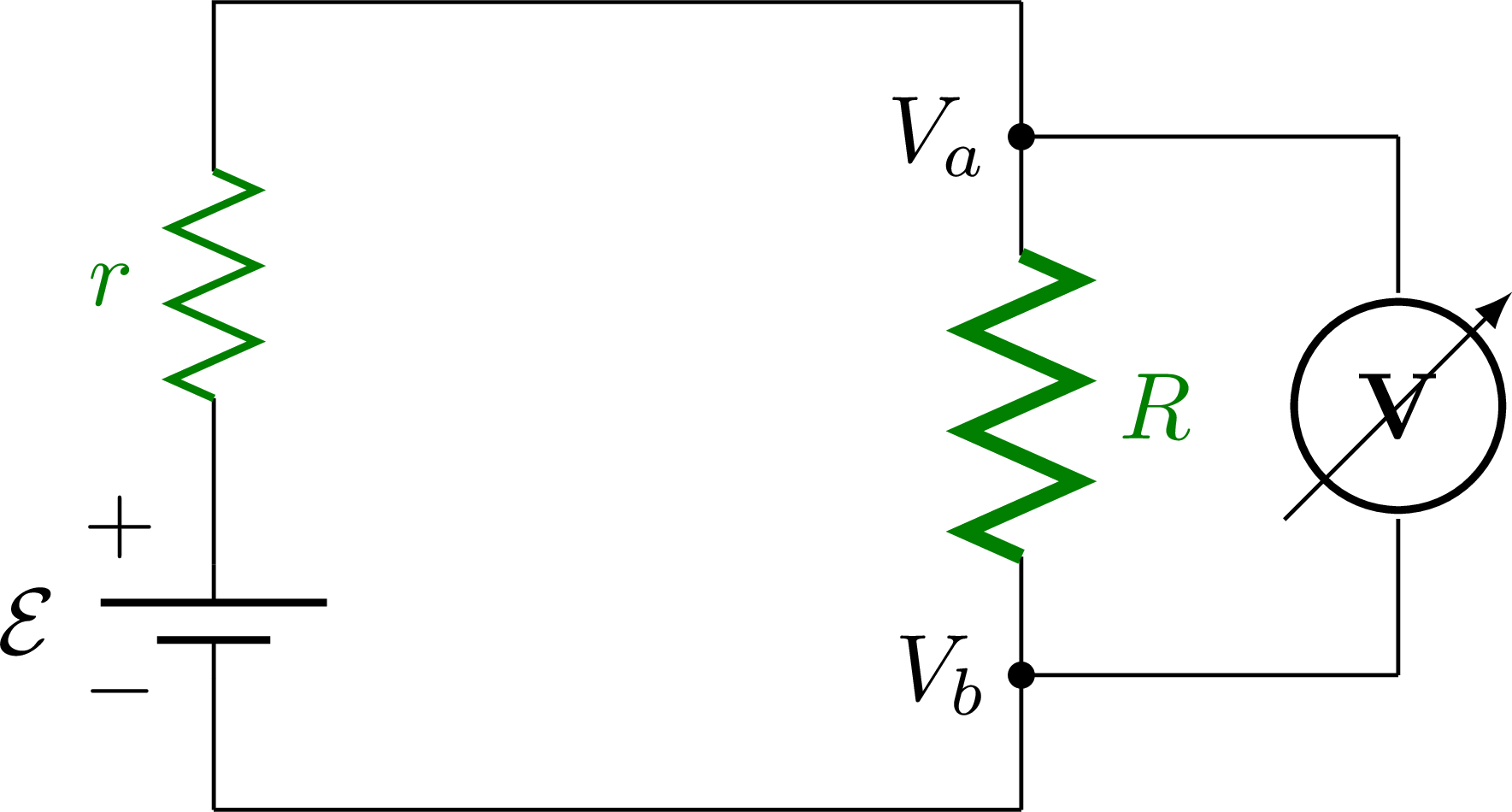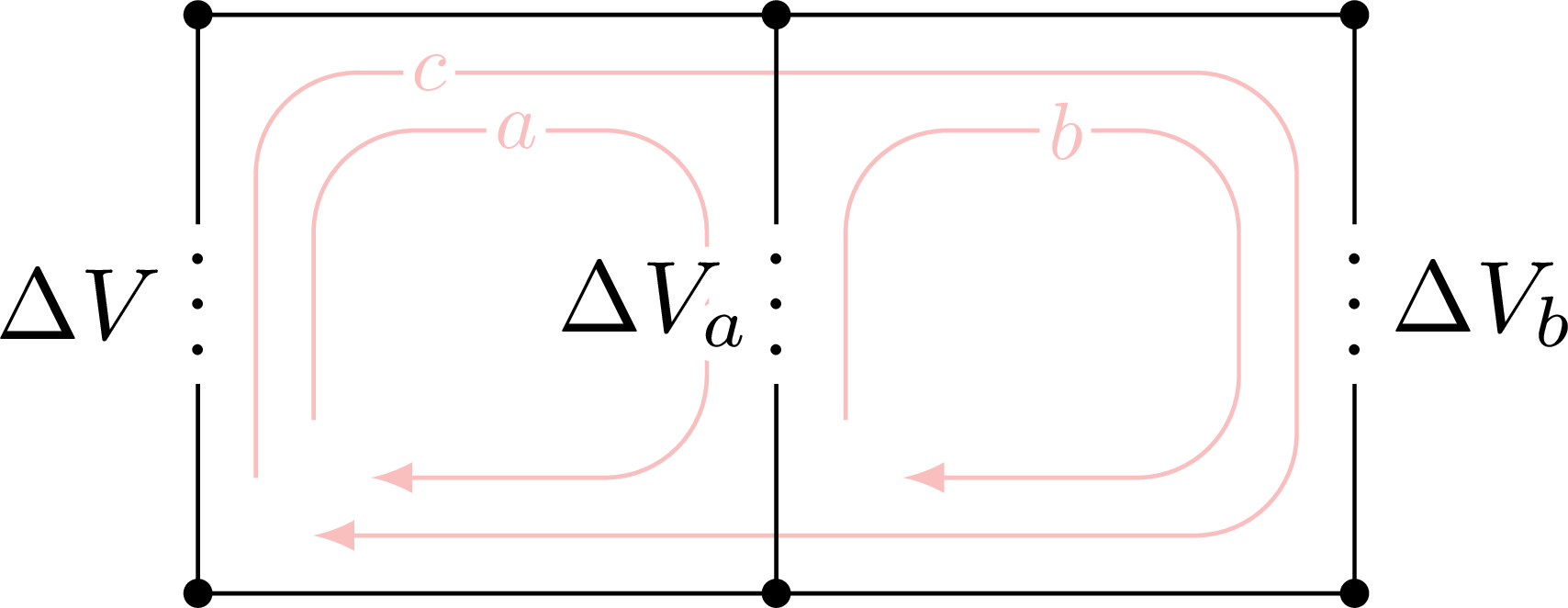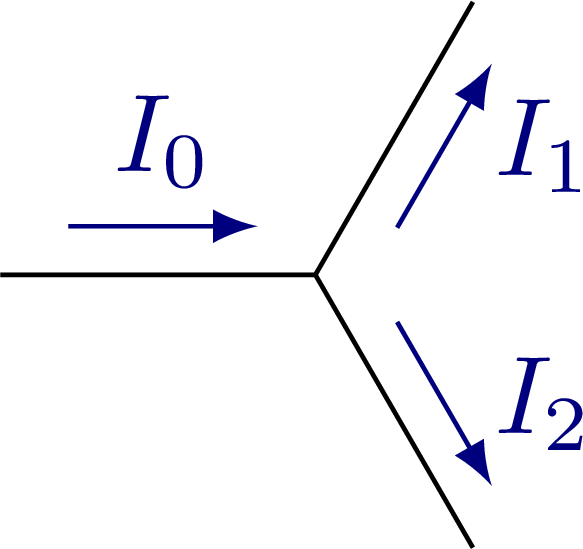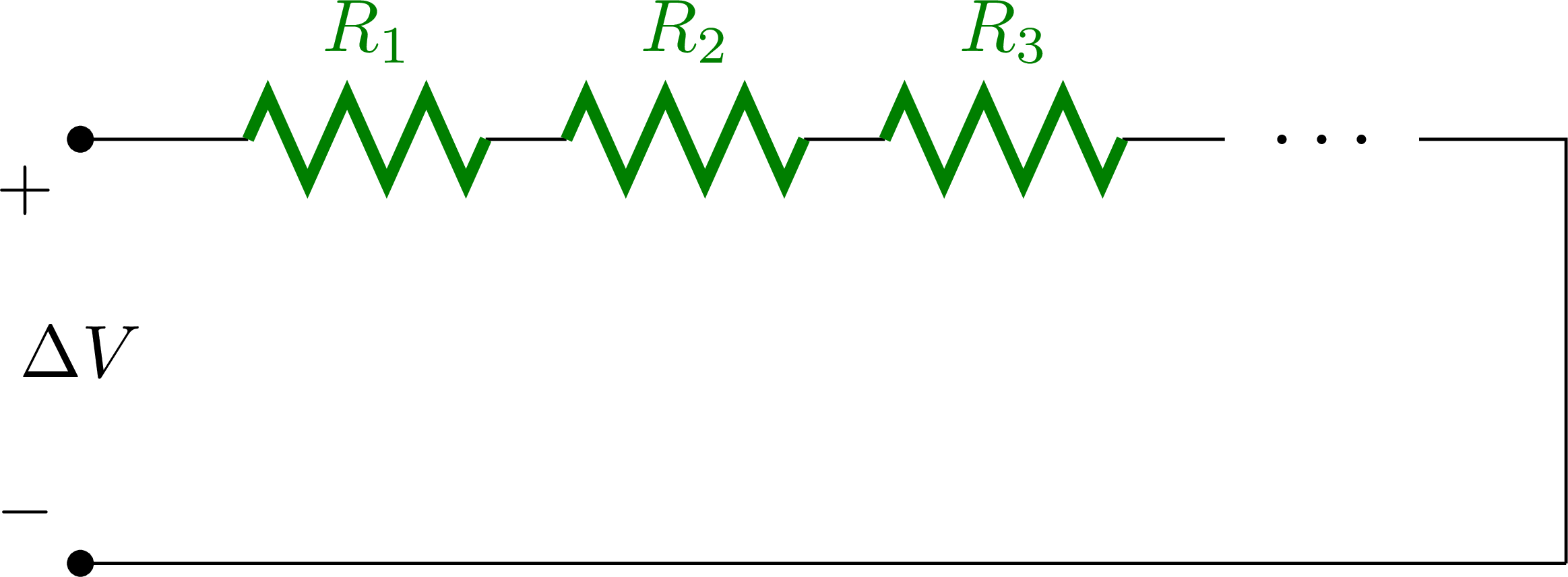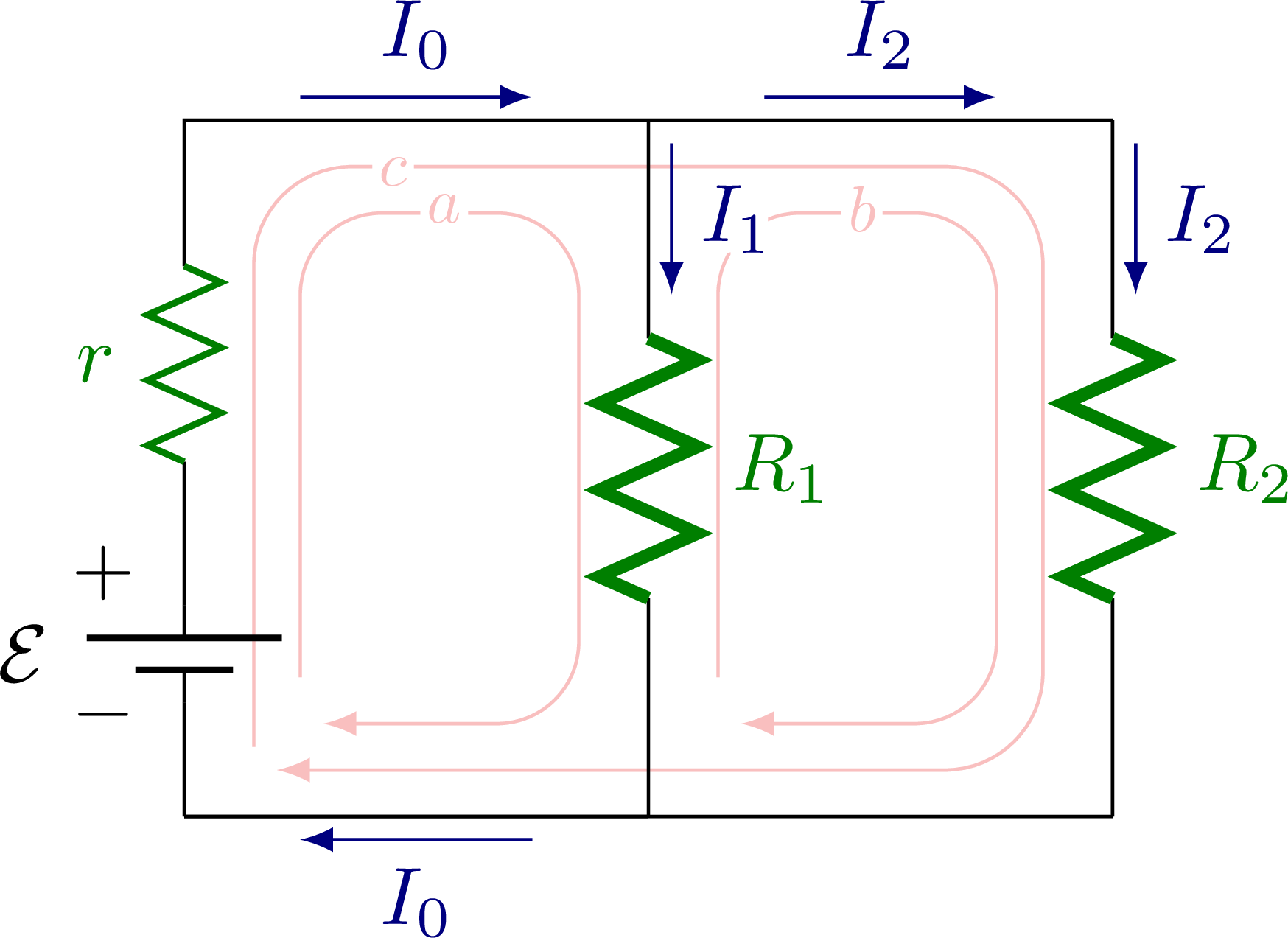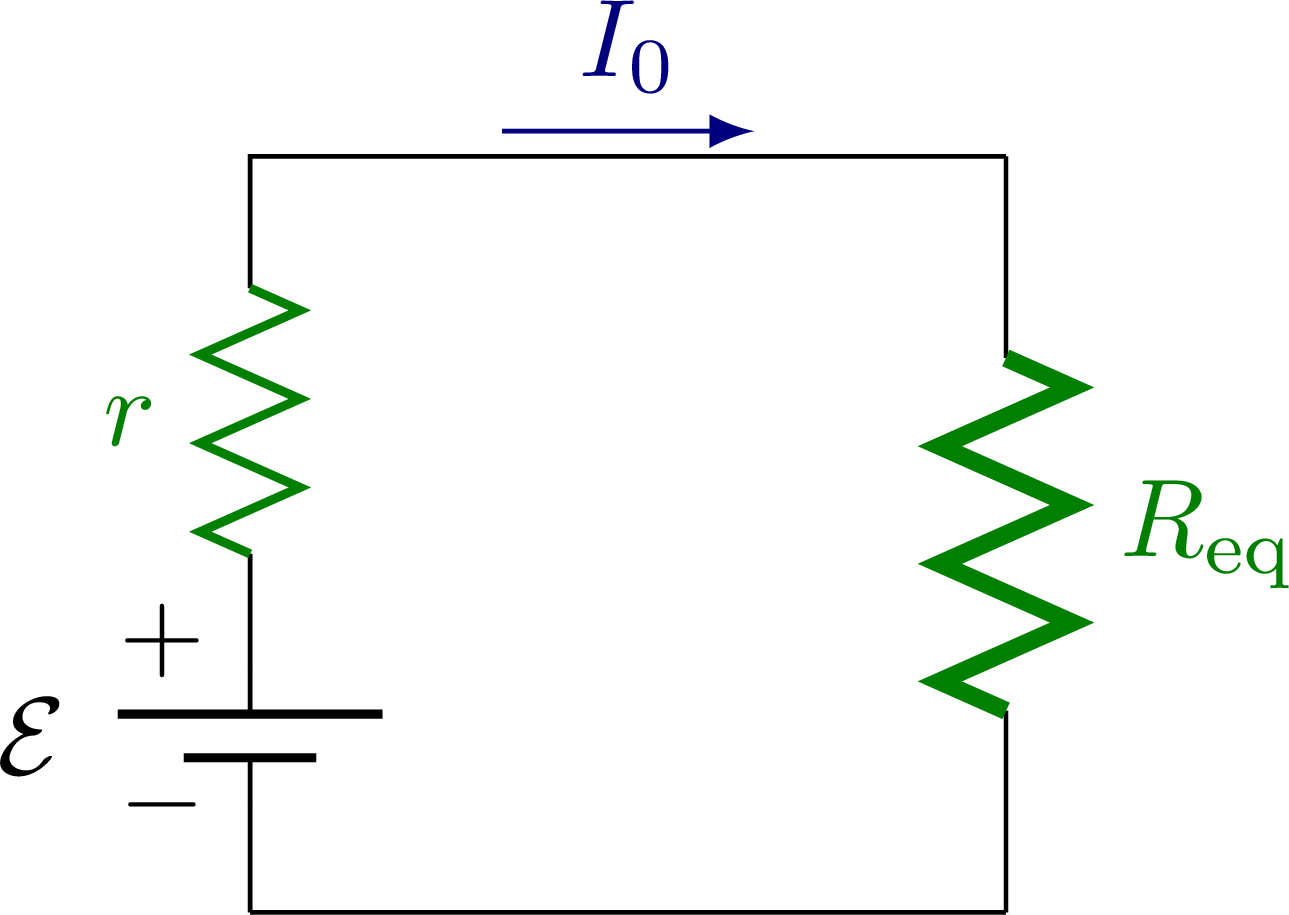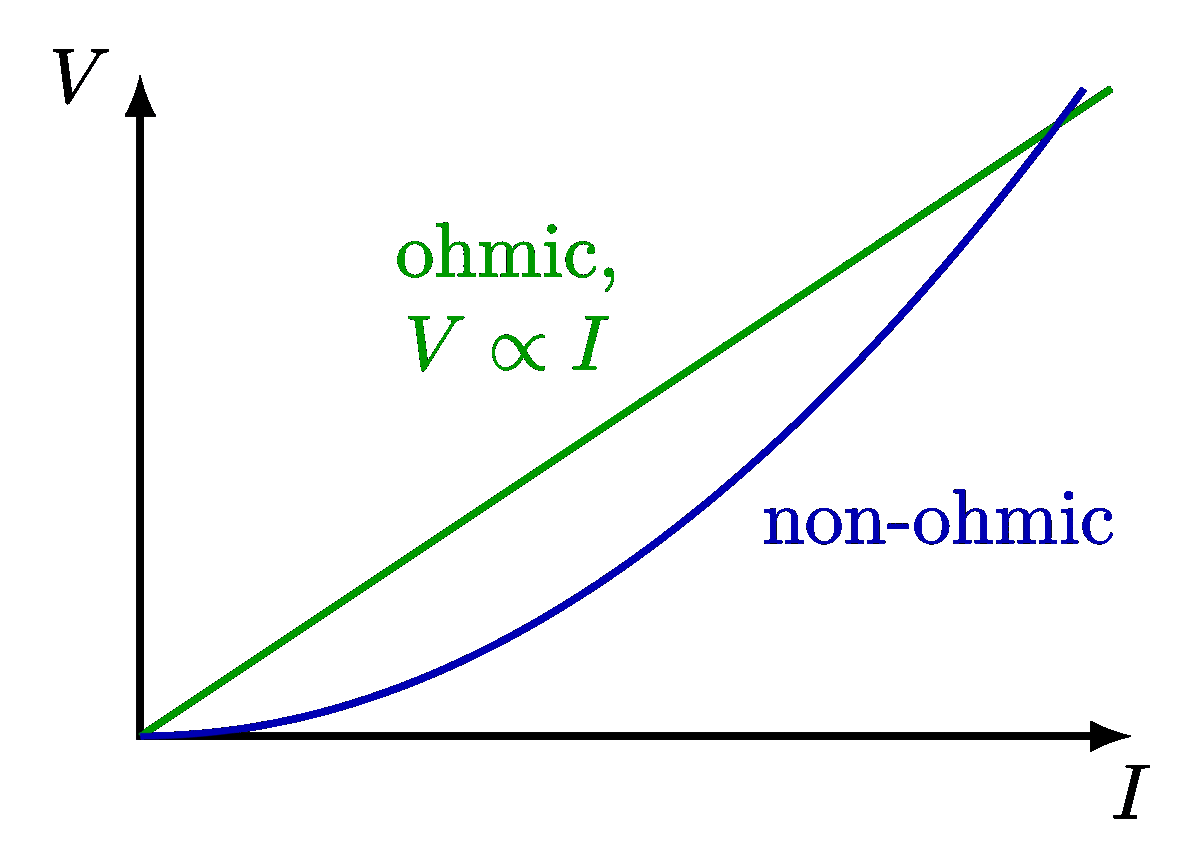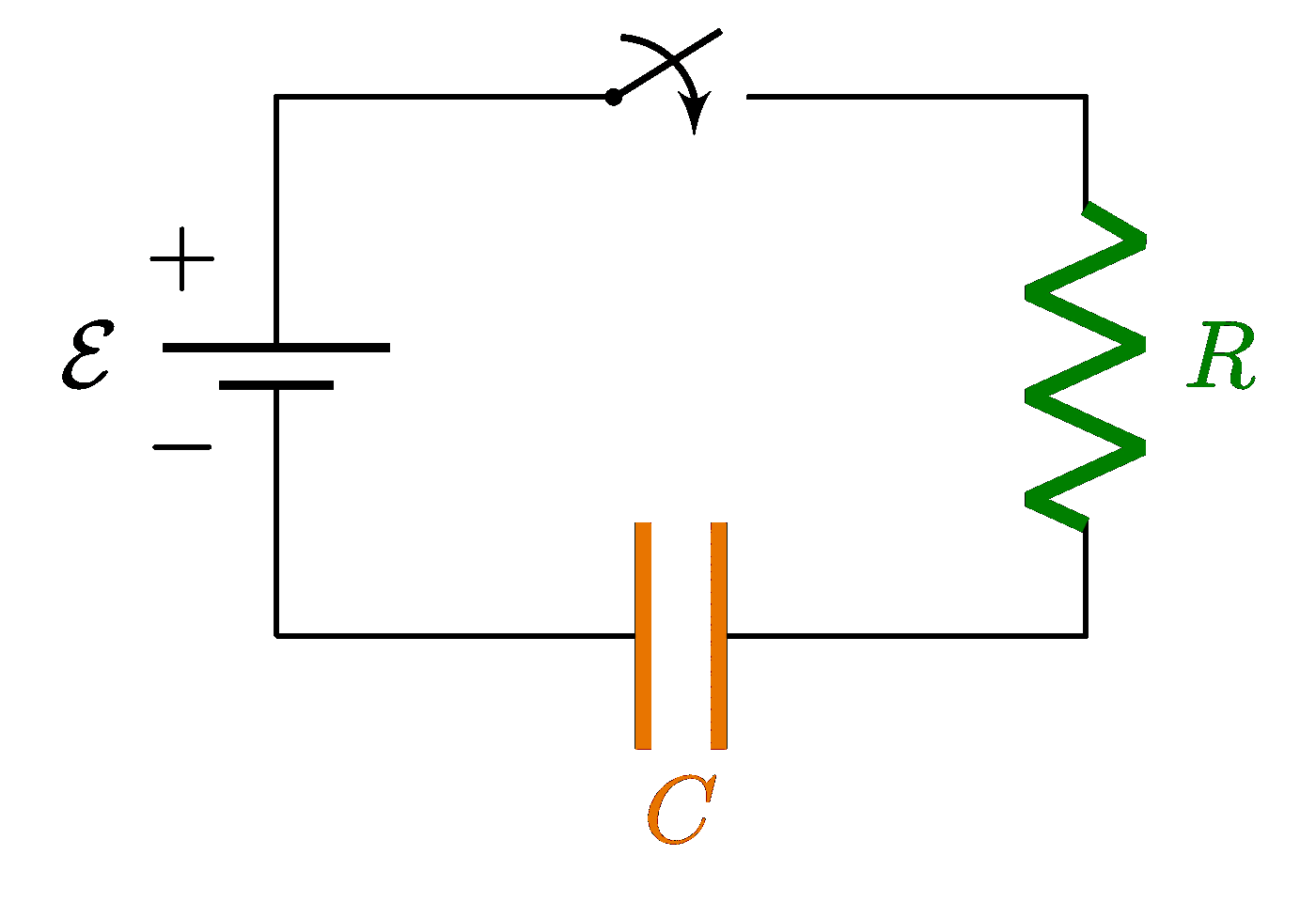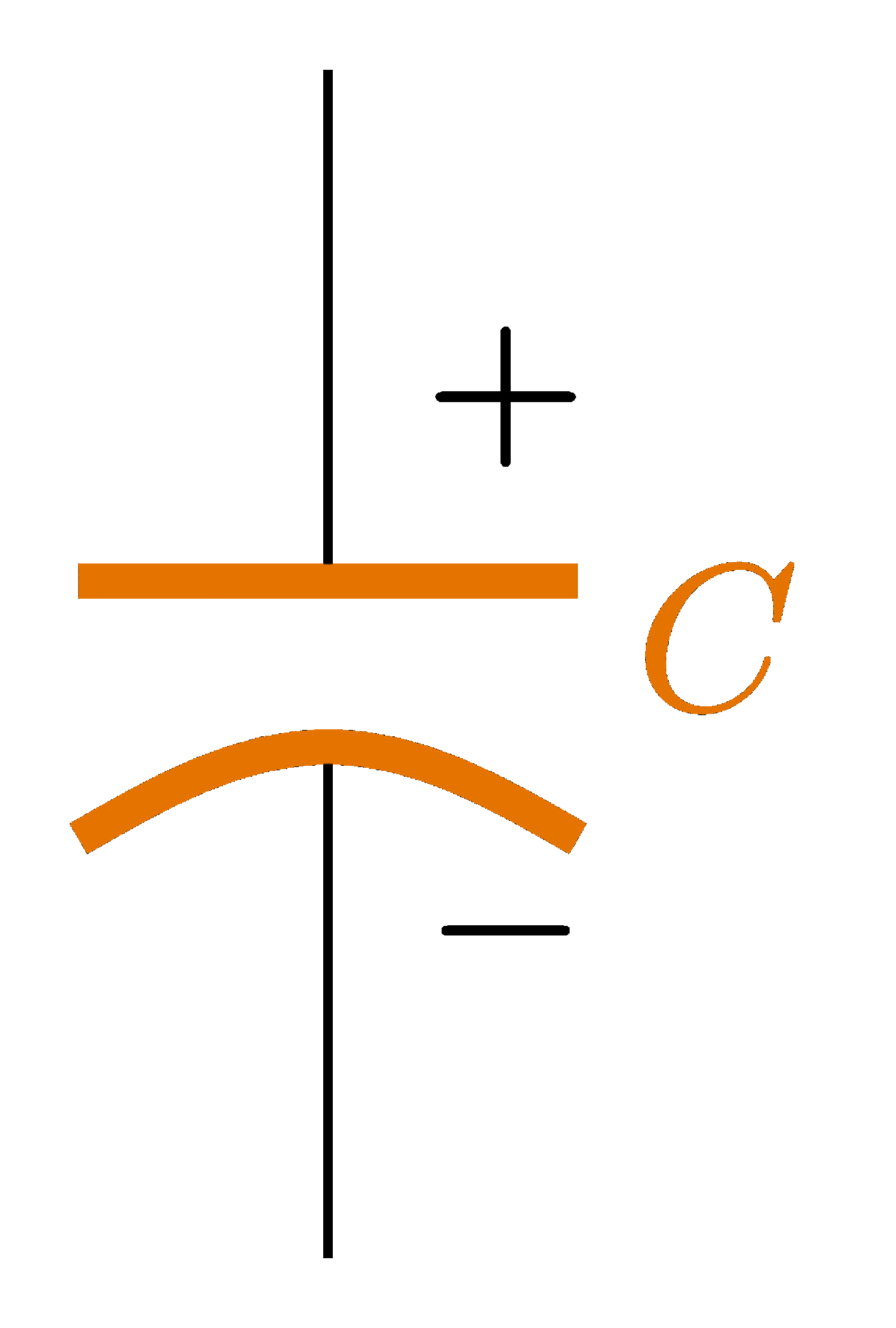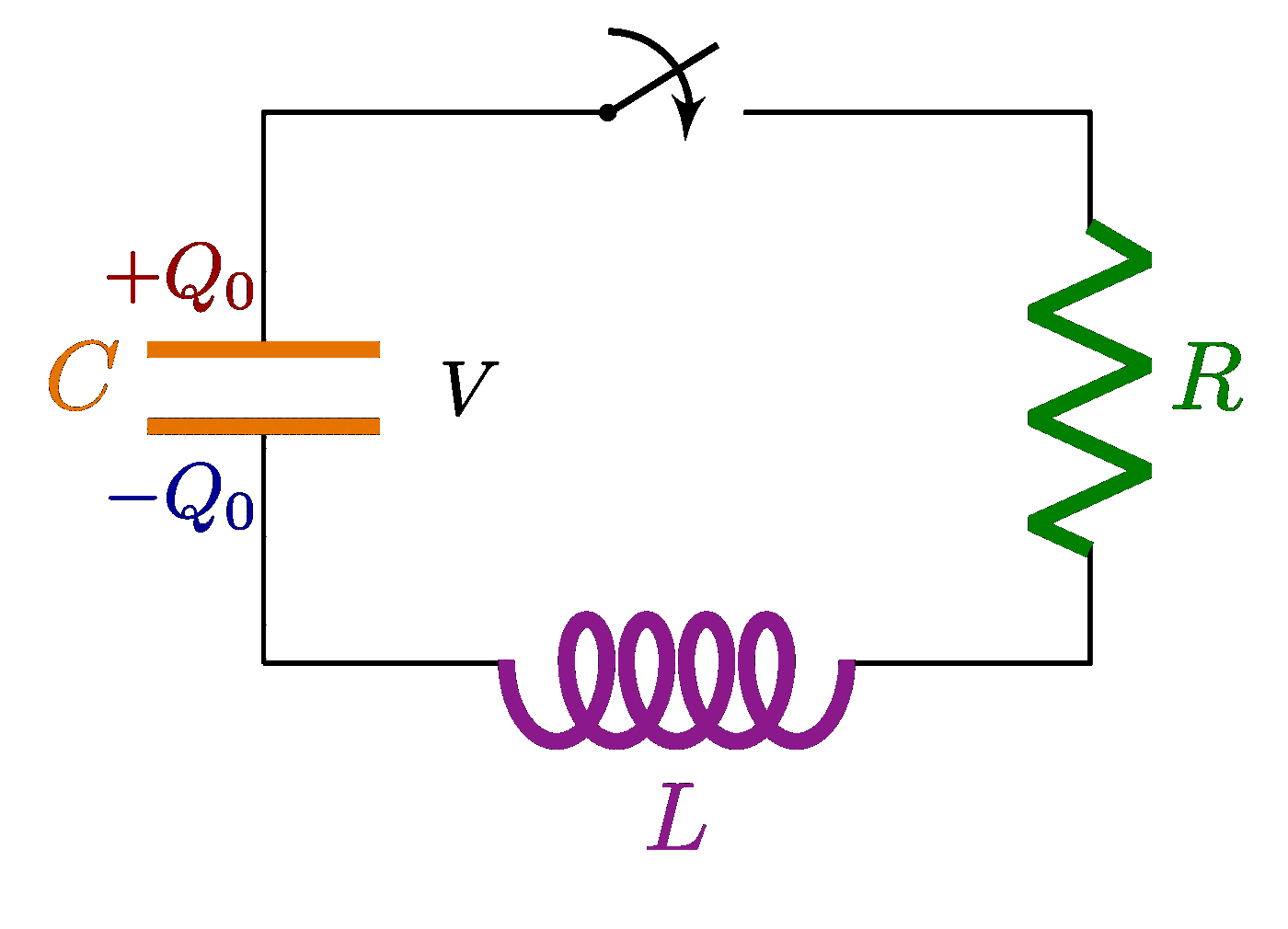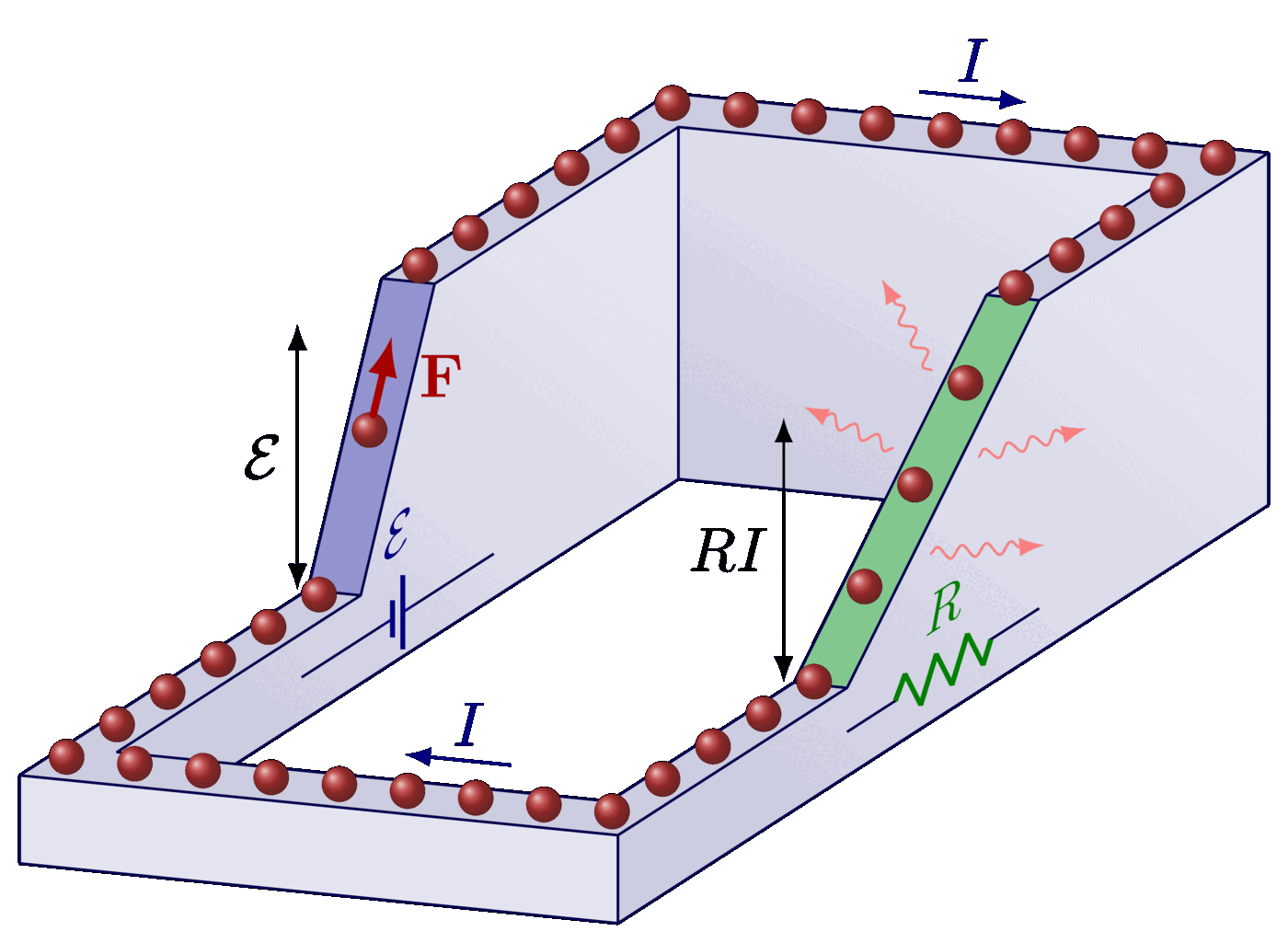Some basic circuit diagrams with one resistor, or more in parallel or series, as well as current branches to study Kirchhoff’s circuit laws.
For more related figures, please see the “circuits” tag.
Edit and compile if you like:
% Author: Izaak Neutelings (Februari, 2020)% http://texample.net/tikz/examples/tag/circuitikz/% http://texample.net/tikz/examples/circuitikz/% https://www.overleaf.com/learn/latex/CircuiTikz_package% http://texdoc.net/texmf-dist/doc/latex/circuitikz/circuitikzmanual.pdf% http://repositorios.cpai.unb.br/ctan/graphics/pgf/contrib/circuitikz/circuitikzmanual.pdf\documentclass[border=3pt,tikz]{standalone}\usepackage{amsmath} % for \dfrac\usepackage{physics}\usepackage{tikz,pgfplots}\usepackage[siunitx]{circuitikz} %[symbols]\usepackage[outline]{contour} % glow around text\usetikzlibrary{arrows}\usetikzlibrary{decorations.markings}\tikzset{>=latex} % for LaTeX arrow head\usepackage{xcolor}\colorlet{Icol}{blue!50!black}\colorlet{Ccol}{orange!90!black}\colorlet{Rcol}{green!50!black}\colorlet{loopcol}{red!90!black!25}\colorlet{pluscol}{red!60!black}\colorlet{minuscol}{blue!60!black}\newcommand\EMF{\mathcal{E}} %\varepsilon}%\tikzstyle{charged}=[top color=blue!20,bottom color=blue!40,shading angle=10]\contourlength{1.5pt}\tikzstyle{EMF}=[battery1,l=$\EMF$]\tikzstyle{internal R}=[R,color=Rcol,Rcol,l=$r$,/tikz/circuitikz/bipoles/length=30pt]\tikzstyle{loop}=[->,red!90!black!25]\tikzstyle{loop label}=[loopcol,fill=white,scale=0.8,inner sep=1]\tikzstyle{thick R}=[R,color=Rcol,thick,Rcol,l=$R$]%\tikzset{% loop/.style={thick,red!80!black!30,decoration={markings,% mark=at position #1 with {\arrow{latex}}},% postaction={decorate}},% loop/.default=0.6}\newcommand{\myvoltmeter}[2]{ % #1 = name , #2 = rotation angle\begin{scope}[transform shape,rotate=#2]\draw[thick] (#1)node(){$\mathbf V$} circle (11pt);
Click to download: electric_circuit_resistor.tex • electric_circuit_resistor.pdf
Open in Overleaf: electric_circuit_resistor.tex


